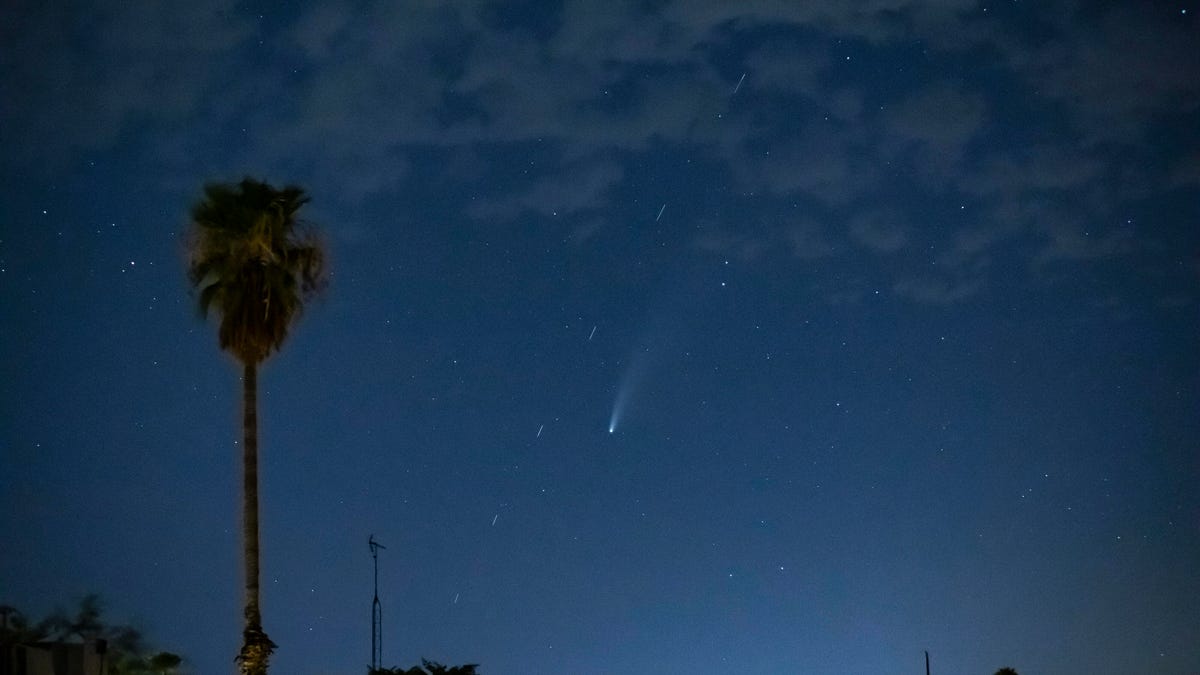SpaceX Starlink satellites are photo-bombing shots of Comet Neowise
It's a new kind of light pollution for sky watchers, but Elon Musk has vowed to fix it.

Starlink trains can be seen just to the left of comet Neowise in this image taken in Lake Havasu, Arizona.
Comet Neowise has been the brightest and most visible space snowball in a generation, but it's also the first naked-eye comet to visit us in the new era of satellite mega-constellations like SpaceX's Starlink.
In just the latest episode of Starlink "trains" irritating astronomers, a number of images have been circulating of the satellites photo-bombing Comet Neowise glamour shots.
The Horror...
— O Fins (@CorneliusGZ) July 17, 2020
The Horror...#starlink #NEOWISE @elonmusk @CeosGalegos pic.twitter.com/eDpYRZYNXM
One particularly dramatic time-lapse shot, by astrophotographer Daniel Lopez from the Canary Islands, has been making the rounds, prompting University of Nottingham astronomy professor Michael Merrifield to sum up his feelings in a pointed and succinct way:
You’re an arse, @elonmusk. pic.twitter.com/U2NLaZk2Qg
— Michael Merrifield (@AstroMikeMerri) July 22, 2020
"You're an arse, @ElonMusk," the professor wrote on Twitter.
SpaceX didn't immediately respond to a request for comment.
So far, SpaceX has launched over 500 of its orbiting routers and has grand plans to launch tens of thousands more in the coming decade. The company has been working with astronomers to address the brightness problem, designing a sunshade called VisorSat that it'll equip its satellites with going forward, to reduce the reflectivity of each small spacecraft.
We'll see over the coming months just how effective the measure is and whether this period of light pollution for sky watchers will be just an anomaly in history or a new normal.

